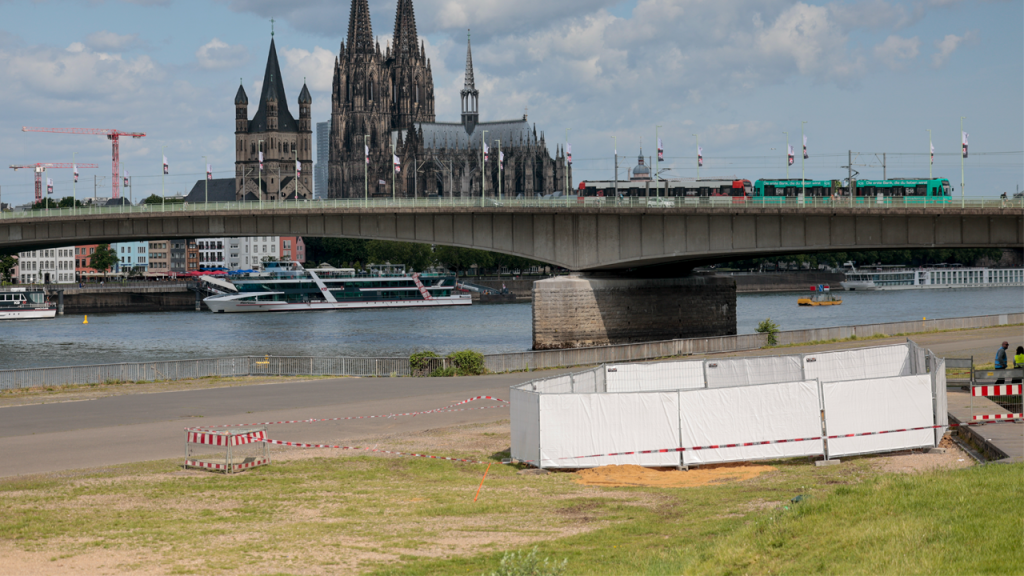In a remarkable display of public safety measures, over 20,000 residents of Cologne, Germany, were evacuated on Wednesday due to the discovery of three unexploded World War II-era bombs. The incident marks the largest evacuation effort in the city since WWII ended. City officials have confirmed that all three bombs were successfully defused by a specialized bomb disposal team, easing fears among the local population.
| Article Subheadings |
|---|
| 1) Discovery of Bombs During Construction |
| 2) Wide-ranging Evacuations and Closure of Facilities |
| 3) The Defusal Operation |
| 4) Historical Context of the Bombs |
| 5) Impact on the Local Community and Future Precautions |
Discovery of Bombs During Construction
On Monday, the discovery of three World War II bombs occurred during exploratory work in the Deutz district of Cologne. Local authorities were alerted to the potential danger after construction workers unearthed the unexploded ordnance. The bombs included two American 2,000-pound bombs and one 1,000-pound bomb, all equipped with impact fuses. The unexpected find required urgent attention, as officials recognized the potential risks posed to the community if the bombs were left untreated.
Wide-ranging Evacuations and Closure of Facilities
As part of the emergency response, city officials mandated the evacuation of approximately 20,500 residents living within a 1.5-kilometer radius of the bomb sites. This was the largest evacuation of Cologne since the end of WWII. In addition to residential evacuations, multiple businesses and public facilities, including schools, the Cologne Messe/Deutz train station, and the Eduardus Hospital, were also closed to ensure the safety of civilians.
The evacuation effort led to the shutdown of key roadways and the suspension of shipping lanes along the Rhine River, significantly impacting daily life in the area. Local law enforcement worked tirelessly to assist residents in safely vacating their homes, while the fire department assisted in setting up temporary shelters for those displaced.
The Defusal Operation
To manage the potential threat posed by the explosives, the Düsseldorf district government’s explosive ordnance disposal service was deployed. The operation to defuse the bombs began in the early afternoon and continued into the evening, lasting nearly 12 hours. Residents waited anxiously as bomb disposal experts assessed the situation and worked diligently to neutralize the threat without incident.
The culmination of the efforts came at approximately 7:19 p.m., when city officials announced via social media that the bombs had been successfully defused. Residents were informed that closed streets and bridges would gradually be reopened, allowing them to return home, either via ambulance or shuttle buses set up by the authorities. The smooth handling of the situation reflects the effective coordination and preparedness of local emergency services.
Historical Context of the Bombs
The historical backdrop of Cologne as a frequent target during Allied air raids is significant. Records show that the city experienced 262 bombing missions, with the first having occurred on May 17, 1940. This extensive bombing campaign exemplified the strategic importance of Cologne during the war, and the remnants of this turbulent history continue to present risks today. Many cities in Europe still deal with the discovery of unexploded ordnance from WWII, causing ongoing challenges for local authorities and residents alike.
Impact on the Local Community and Future Precautions
The recent evacuation and bomb defusal operation have understandably shaken the local community. Traffic disruptions, business closures, and temporary displacement from homes added to the anxiety experienced by residents. However, it also highlights the necessity of vigilance in urban areas with a rich wartime history. Residents have expressed mixed feelings—relief at the successful resolution of the crisis, but also concern about future discoveries of similar ordnance. Local leaders have emphasized the importance of community awareness and potential contingencies in the face of these historical remnants.
Going forward, authorities are working on measures that include regular inspections of construction sites in areas known for past military activity. Educating the community about evacuation protocols and emergency responses is also a priority to ensure that residents feel safe and prepared for potential future occurrences.
| No. | Key Points |
|---|---|
| 1 | Three WWII bombs were discovered in Cologne, prompting a large-scale evacuation. |
| 2 | Over 20,000 residents were evacuated to ensure safety while the bombs were defused. |
| 3 | The defusal operation lasted around 12 hours and was completed successfully by specialized teams. |
| 4 | Cologne’s history as a WWII bombing target contributes to the ongoing presence of unexploded ordnance. |
| 5 | Local authorities aim to enhance community awareness and preparedness for future incidents. |
Summary
The discovery of unexploded WWII bombs in Cologne not only posed immediate risks but also served as a somber reminder of the city’s wartime past. The successful defusal operation underscores the critical role that emergency services play in maintaining public safety. As residents return to normalcy, city officials are focused on implementing preventative measures to avert similar situations in the future, ensuring a secure environment for all.
Frequently Asked Questions
Question: What types of bombs were discovered in Cologne?
The discovered bombs included two American 2,000-pound bombs and one 1,000-pound bomb, all from World War II.
Question: How many residents were evacuated during this operation?
Approximately 20,500 residents were evacuated from the area surrounding the bomb sites to ensure their safety during the defusal operation.
Question: How long did the bomb defusal take?
The bomb defusal operation lasted nearly 12 hours, from the early afternoon until around 7:19 p.m. when the bombs were successfully neutralized.


